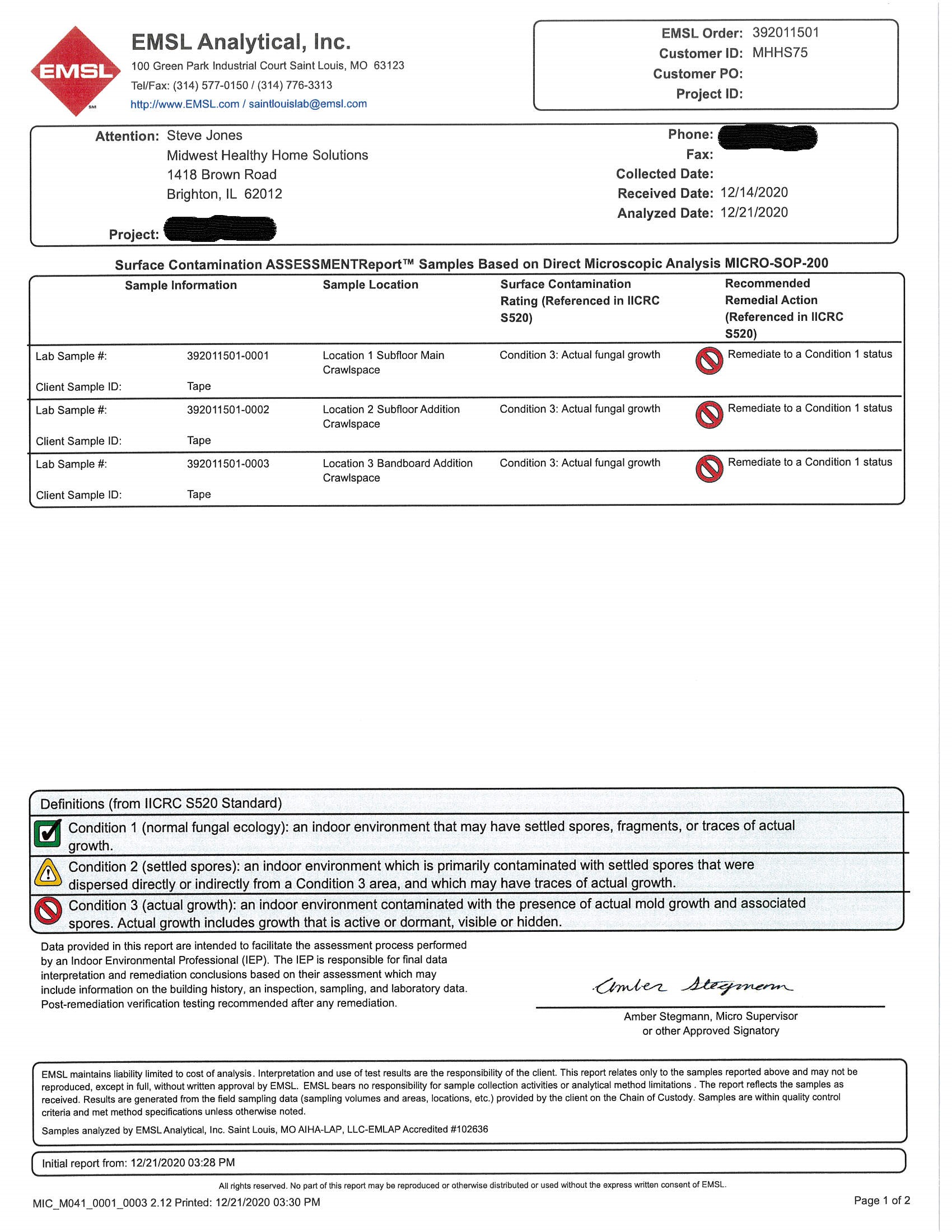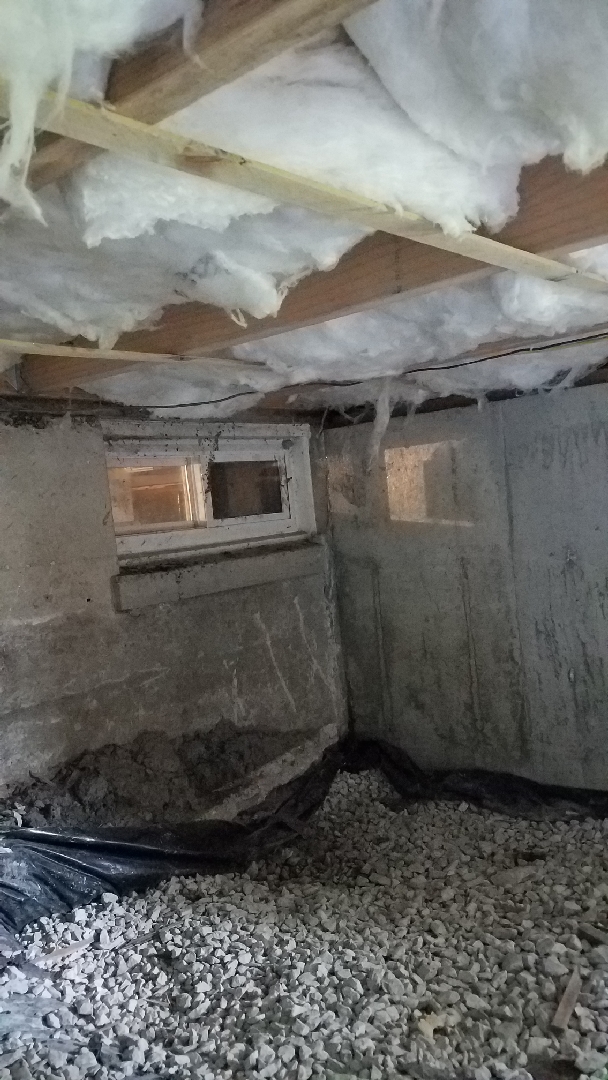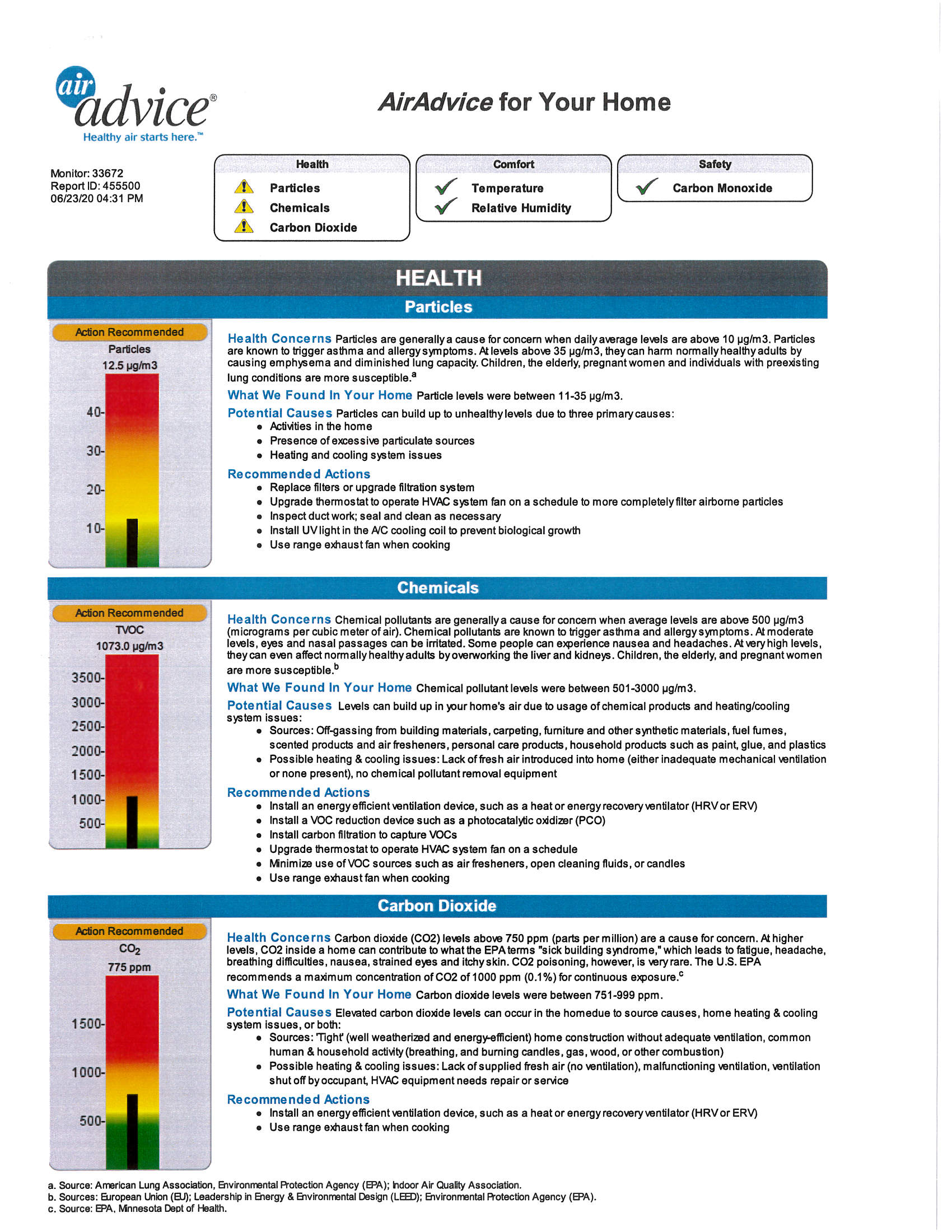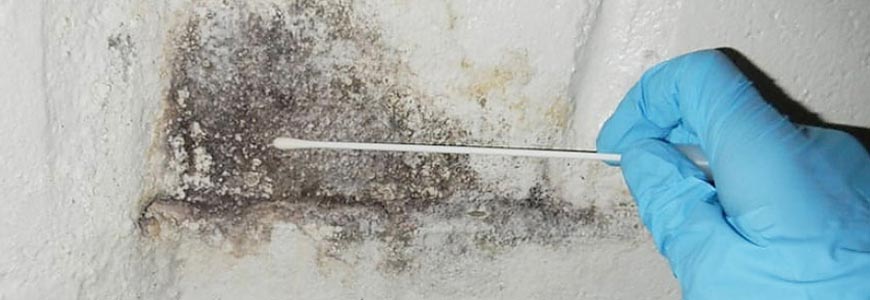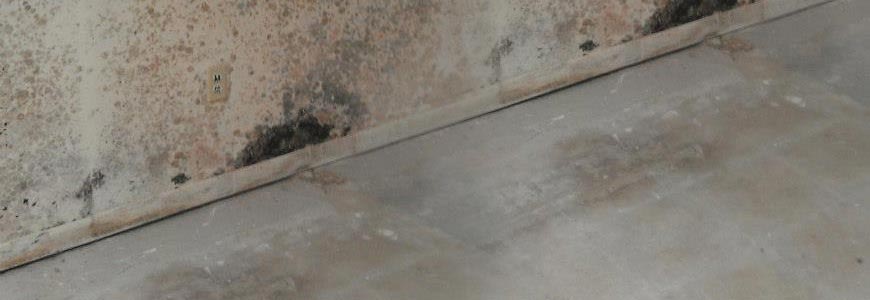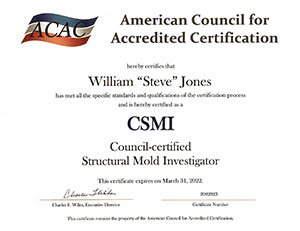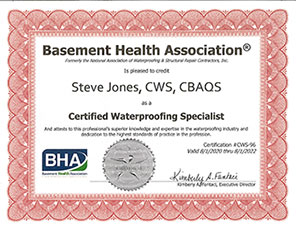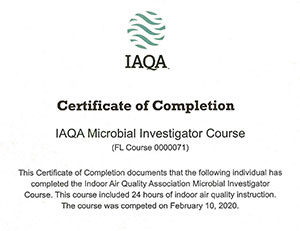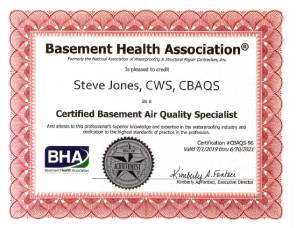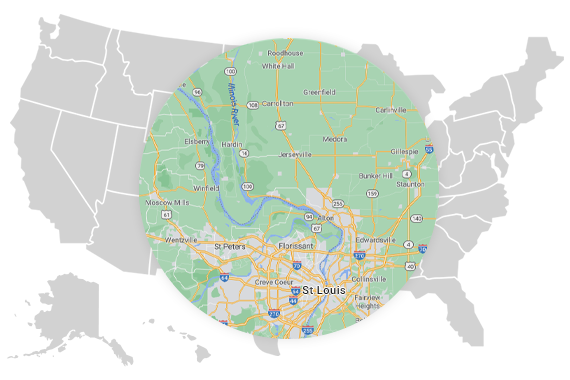
Mold Testing Process in Greater St. Louis & Metro East
Tape and swab sampling are 2 of the most accurate techniques when visible signs of mold are present since it involves direct contact with the suspect surface area.
Our Extensive Services in St. Louis, Edwardsville, St. Peters & More
If mold has anything to do with it, it's a service we perform at Midwest Healthy Home Solutions. Our comprehensive list of services includes:
Contact Midwest Healthy Home Solutions
- Air Tests
- Surface Swab Tests
- Tape Lifts
- Reports & Analysis
Moisture Control
Water in your home can come from many sources. Water can enter your home by leaking or by seeping through basement floors. Showers or even cooking can add moisture to the air in your home. The amount of moisture that the air in your home can hold depends on the temperature of the air. As the temperature goes down, the air is able to hold less moisture. This is why, in cold weather, moisture condenses on cold surfaces (for example, drops of water form on the inside of a window). This moisture can encourage biological pollutants to grow.
There are many ways to control moisture in your home:
- Fix leaks and seepage. If water is entering the house from the outside, repairs should be made immediately to prevent damage and mold growth by a qualified contractor. If the source relates to your Roof, basement or Crawlspace, Interior sources can be plumbing, HVAC or interior sources of humidity and eliminating the source will keep the problem from coming back.
- Put a plastic cover over dirt crawlspaces to prevent moisture from coming in from the ground. Be sure crawlspaces are well-ventilated.
- Use exhaust fans in bathrooms and kitchens to remove moisture to the outside (not into the attic) Vent your clothes dryer to the outside.
- Turn off certain appliances (such as humidifiers or kerosene heaters) if you notice moisture on windows and other surfaces.
- Use dehumidifiers and air conditioners, especially in hot, humid climates, to reduce moisture in the air, but be sure that the appliances themselves don't become sources of biological pollutants.
- Raise the temperature of cold surfaces where moisture condenses. Use insulation or storm windows. (A storm window installed on the inside works better than one installed on the outside ) Open doors between rooms (especially doors to closets which may be colder than the rooms) to increase circulation. Circulation carries heat to the cold surfaces Increase air circulation by using fans and by moving furniture from wall corners to promote air and heat circulation. Be sure that your house has a source of fresh air and can expel excessive moisture from the home.
- Pay special attention to carpet on concrete floors. Carpet can absorb moisture and serve as a place for biological pollutants to grow. Use area rugs which can be taken up and washed often In certain climates, if carpet is to be installed over a concrete floor, it maybe necessary to use a vapor barrier (plastic sheeting) over the concrete and cover that with sub-flooring (insulation covered with plywood) to prevent a moisture problem.
- Moisture problems and their solutions differ from one climate to another. The Northeast is cold and wet, the Southwest is hot and dry, the South is hot and wet, and the Western Mountain states are cold and dry. All of these regions can have moisture problems. For example, evaporative coolers used in the Southwest can encourage the growth of biological pollutants. In other hot regions, the use of air conditioners which cool the air too quickly may prevent the air conditioners from running long enough to remove excess moisture from the air. The types of construction and weatherization for the different climates can lead to different problems and solutions.
Where Biological Pollutants May Be Found in the Home
|
1. Dirty Air Conditioners |
8. Carpet on Damp Basement Floor |
Maintain & Clean All Appliances That Come In Contact With Water
- Have major appliances, such as furnaces, heat pumps and central air conditioners, inspected and cleaned regularly by a professional, especially before seasonal use. Change filters on heating and cooling systems according to manufacturer's directions. (In general, change filters monthly during use.) When first turning on the heating or air conditioning at the start of the season, consider leaving your home until it airs out.
- Have window or wall air-conditioning units cleaned and serviced regularly by a professional, especially before the cooling season. Air conditioners can help reduce the entry of allergy-causing pollen. But they may also become a source of biological pollutants if not properly maintained. Clean the coils and rinse the drain pans according to manufacturer's instructions, so water can-not collect in pools.
- Have furnace-attached humidifiers cleaned and serviced regularly by a professional, especially before the heating season.
- Follow manufacturer's instructions when using any type of humidifier Experts differ on the benefits of using humidifiers. If you do use a portable humidifier (approximately 1 to 2 gallon tanks), be sure to empty its tank every day and refill with distilled or demineralized water, or even fresh tap water if the other types of water are unavailable For larger portable humidifiers, change the water as recommended by the manufacturer. Unplug the appliance before cleaning. Every third day, clean all surfaces coming in contact with water with a 3% solution of hydrogen peroxide, using a brush to loosen deposits Some manufacturers recommend using diluted household bleach for cleaning and maintenance, generally in a solution of one-half cup bleach to one gallon water When any household chemical, rinse well to remove all traces of chemical before refilling humidifier.
- Empty dehumidifiers daily and clean often. If possible, have the appliance drip directly into a drain. Follow manufacturer's instructions for cleaning and maintenance. Always disconnect the appliance before cleaning.
- Clean refrigerator drip pans regularly according to manufacturer's instructions. If refrigerator and freezer doors don't seal properly, moisture may build up and mold can grow. Remove any mold on door gaskets and replace faulty gaskets.
Clean Surfaces
- Clean moist surfaces, such as showers and kitchen counters.
- Remove mold from walls, ceilings, floors, and paneling. Do not simply cover mold with paint, stain, varnish, or a moisture-proof sealer, as it may resurface.
- Replace moldy shower curtains, or remove them and scrub well with a household cleaner and rinse before rehanging them.
Dust Control
Controlling dust is very important for people who are allergic to animal dander and mites. You cannot see mites, but you can either remove their favorite breeding grounds or keep these areas dry and clean. Dust mites can thrive in sofas, stuffed chairs, carpets, and bedding. Open shelves, fabric wallpaper, knickknacks, and venetian blinds are also sources of dust mites. Dust mites live deep in the carpet and are not removed by vacuuming. Many doctors suggest that their mite-allergic patients use washable area rugs rather than wall-to-wall carpet.
- Always wash bedding in hot water (at least 130° F) to kill dust mites. Cold water won't do the job. Launder bedding at least every 7 to 10 days.
- Use synthetic or foam rubber mattress pads and pillows, and plastic mattress covers if you are allergic Do not use fuzzy wool blankets, feather or wool-stuffed comforters, and feather pillows.
- Clean rooms and closets well, dust and vacuum often to remove surface dust. Vacuuming and other cleaning may not remove all animal dander, dust mite material, and other biological pollutants. Some particles are so small they can pass through vacuum bags and remain in the air If you are allergic to dust, wear a mask when vacuuming or dusting. People who are highly allergy-prone should not perform these tasks. They may even need to leave the house when someone else is cleaning.
Before You Move
Protect yourself by inspecting your potential new home. If you identify problems, have the landlord or seller correct them before you move in, or even consider moving elsewhere.
- Have professionals check the heating and cooling system, including humidifiers and vents Have duct lining and insulation checked for growth.
- Check for exhaust fans in bathrooms and kitchens If there are no vents, do the kitchen and bathrooms have at least one window a piece? Does the cook top have a hood vented outside? Does the clothes dryer vent outside? Are all vents to the outside of the building, not in attics or crawlspaces?
- Look for obvious mold growth throughout the house, including attics, basements, and crawlspaces and around the foundation. See if there are many plants close to the house, particularly if they are damp and rotting. They are a potential source of biological pollutants. Downspouts from roof gutters should route water away from the building.
- Look for stains on the walls, floor or carpet (including any carpet over concrete floors) as evidence of previous flooding or moisture problems. Is there moisture on windows and surfaces? Are there signs of leaks or seepage in the basement?
- Look for rotted building materials which may suggest moisture or water damage.
- If you or anyone else in the family has a pet allergy, ask if any pets have lived in the home.
- Examine the design of the building. Remember that in cold climates, overhanging areas, rooms over unheated garages, and closets on outside walls may be prone to problems with biological pollutants.
- Look for signs of cockroaches.
Warning!
Carefully read instructions for use and any cautionary labeling on cleaning products before beginning cleaning procedures.
- Do not mix any chemical products. Especially, never mix cleaners containing bleach with any product (such as ammonia) which does not have instructions for such mixing When chemicals are combined, a dangerous gas can sometimes be formed.
- Household chemicals may cause burning or irritation to skin and eyes.
- Household chemicals may be harmful if swallowed, or inhaled.
- Avoid contact with skin, eyes, mucous membranes and clothing.
- Avoid breathing vapor. Open all windows and doors and use an exhaust fan that sends the air outside.
- Keep household chemicals out of reach of children.
- Rinse treated surface areas well to remove all traces of chemicals.
Correcting Water Damage
What if damage is already done? Follow these guidelines for correcting water damage:
- Throw out mattresses, wicker furniture, straw baskets and the like that have been water damaged or contain mold. These cannot be recovered.
- Discard any water-damaged furnishings such as carpets, drapes, stuffed toys, upholstered furniture and ceiling tales, unless they can be recovered by steam cleaning or hot water washing and thorough drying.
- Remove and replace wet insulation to prevent conditions where biological pollutants can grow.
- Affton
- Albers
- Alexander
- Alhambra
- Allenton
- Alsey
- Alton
- Arnold
- Auburn
- Augusta
- Aviston
- Ballwin
- Barnhart
- Bartelso
- Batchtown
- Beckemeyer
- Bella Vista
- Belle
- Bellefontaine Neighbors
- Bellerive
- Belleville
- Benld
- Berkeley
- Bethalto
- Beverly Hills
- Black Jack
- Bluffs
- Breckenridge Hills
- Breese
- Brentwood
- Bridgeton
- Brighton
- Brinktown
- Brumley
- Brussels
- Buffalo
- Bunker Hill
- Byrnes Mill
- Calverton Park
- Camdenton
- Cantrall
- Carlinville
- Carlyle
- Carrollton
- Caseyville
- Castle Point
- Cedar Hill
- Centertown
- Champ
- Chapin
- Charlack
- Chatham
- Chesterfield
- Clarkson Valley
- Clayton
- Climax Springs
- Collinsville
- Columbia
- Concord
- Cool Valley
- Cottage Hills
- Cottleville
- Country Club Hills
- Country Life Acres
- Crestwood
- Creve Coeur
- Crystal City
- Crystal Lake Park
- Dardenne Prairie
- Dawson
- Defiance
- Dellwood
- Des Peres
- DeSoto
- Dittmer
- Divernon
- Dorsey
- Dow
- Dupo
- Eagarville
- Earth City
- East Alton
- East Carondelet
- East Saint Louis
- Edmundson
- Edwardsville
- Eldon
- Eldred
- Ellisville
- Elsah
- Eugene
- Eureka
- Fairview Heights
- Fenton
- Festus
- Fidelity
- Fieldon
- Fletcher
- Flinthill
- Flordell Hills
- Florissant
- Foristell
- Franklin
- Freeburg
- Frontenac
- Fults
- Germantown
- Gillespie
- Girard
- Glasgow Village
- Glen Carbon
- Glen Echo Park
- Glenarm
- Glencoe
- Glendale
- Godfrey
- Golden Eagle
- Grafton
- Granite City
- Grantwood Village
- Green Park
- Greendale
- Greenfield
- Greenville
- Grover
- Hamburg
- Hamel
- Hanley Hills
- Hardin
- Hartford
- Harvester
- Hazelwood
- Hecker
- Hematite
- Henley
- Herculaneum
- Hettick
- High Ridge
- Highland
- Hillsboro
- Hillsdale
- Hillview
- Hoffman
- House Springs
- Huey
- Huntleigh
- Iberia
- Illiopolis
- Imperial
- Jacksonville
- Jefferson City
- Jennings
- Jerseyville
- Kaiser
- Kampsville
- Kane
- Keyesport
- Kimmswick
- Kirkwood
- Ladue
- Lake Ozark
- Lake Saint Louis
- Lakeshire
- Lebanon
- Lemay
- Lenzburg
- Liguori
- Linn Creek
- Literberry
- Livingston
- Loami
- Lohman
- Lovejoy
- Lowder
- Mackenzie
- Macks Creek
- Madison
- Maeystown
- Manchester
- Mapaville
- Maplewood
- Marine
- Marissa
- Marlborough
- Maryland Heights
- Maryville
- Mascoutah
- Mechanicsburg
- Medora
- Mehlville
- Meredosia
- Michael
- Millstadt
- Modesto
- Moline Acres
- Montreal
- Moro
- Morse Hill
- Mount Olive
- Mozier
- Mulberry Grove
- Murrayville
- National Stock Yards
- New Athens
- New Baden
- New Berlin
- New Douglas
- New Melle
- New Memphis
- Nilwood
- Normandy
- Northwoods
- Norwood Court
- O Fallon
- Oakland
- Oakville
- Olean
- Olivette
- Osage Beach
- Overland
- Palmyra
- Pasadena Hills
- Pasadena Park
- Patterson
- Pawnee
- Pevely
- Piasa
- Pierron
- Pleasant Plains
- Pocahontas
- Portage Des Sioux
- Renault
- Richmond Heights
- Riverton
- Roach
- Robertson
- Rochester
- Rock Hill
- Rockbridge
- Roodhouse
- Roxana
- Russellville
- Saint Ann
- Saint Charles
- Saint Elizabeth
- Saint George
- Saint Jacob
- Saint John
- Saint Labory
- Saint Louis
- Saint Peters
- Saint Thomas
- Sappington
- Sawyerville
- Scottville
- Sherman
- Shiloh
- Shipman
- Shrewsbury
- Smithboro
- Smithton
- Sorento
- South Roxana
- Springfield
- Staunton
- Summerfield
- Sunrise Beach
- Sunset Hills
- Sycamore Hills
- Thayer
- Town And Country
- Trenton
- Troy
- Tuscumbia
- Twin Oaks
- Ulman
- University City
- Uplands Park
- Valley Park
- Valmeyer
- Velda City
- Velda Village Hills
- Venice
- Vichy
- Vienna
- Vinita Terrace
- Virden
- Warson Woods
- Waterloo
- Waverly
- Webster Groves
- Weldon Springs
- Wellston
- Wentzville
- West Alton
- Westwood
- White Hall
- Wildwood
- Williamsville
- Wilsonville
- Winchester
- Wood River
- Woodson
- Worden
- Wrights
Central & Southern IL & MO, Greater St. Louis, and Metro East
A Moldy House is a Sick House!
Click Here to Contact Us


